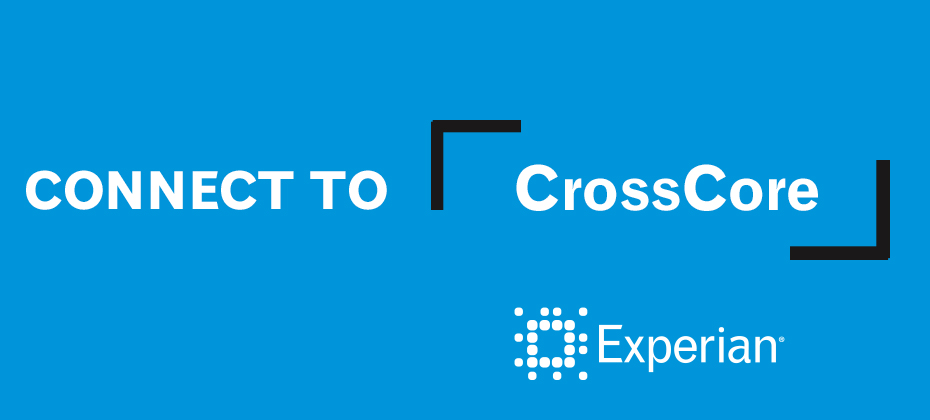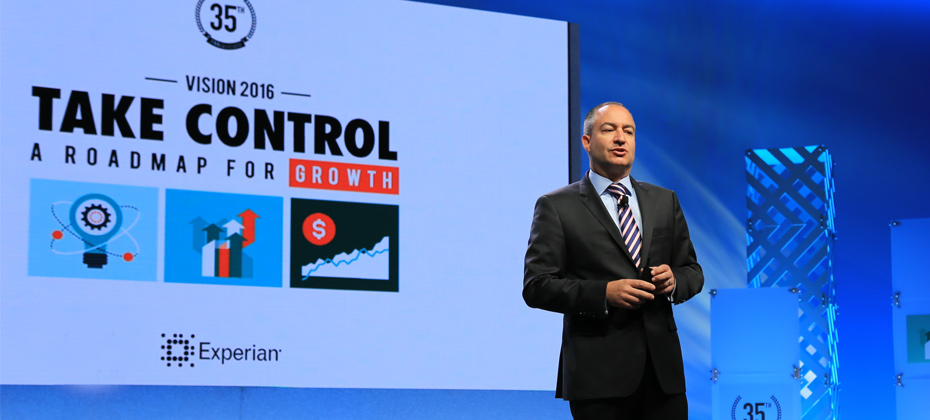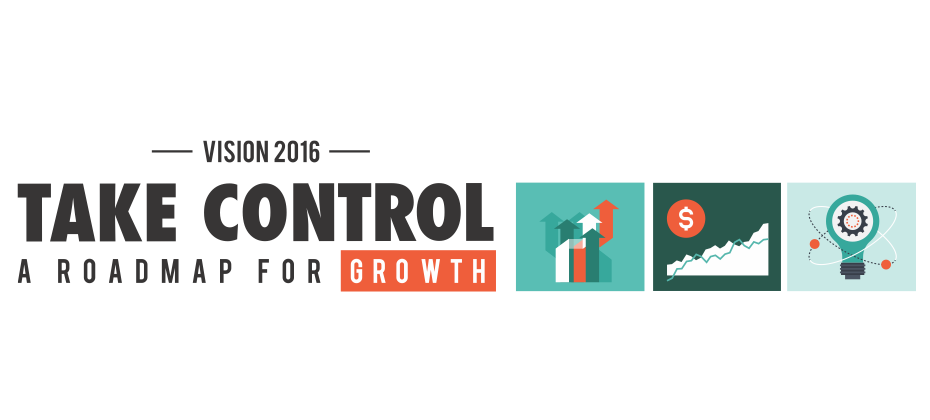Latest Posts

Part 3 in our series on Insights from the Vision 2016 fraud and identity track Our Vision 2016 fraud track session titled “Deployment Made Easy — solving new fraud problems by Adapting Legacy Solutions” offered insights into the future of analytics and the mechanisms for delivering them. The session included two case studies, the first of which highlighted a recently completed project in which an Experian client struggling with rising application fraud losses had to find a way to deploy advanced analytics without any IT resources. To assist the customer, data passing through an existing customer interface was reformatted and redirected to our Precise ID® platform. Upon arrival in Precise ID, a custom-built fraud scoring model was invoked. The results were then translated back into the format used by the legacy interface so that they could be ingested by the customer’s systems. This case study illustrates the key value proposition of Experian’s new CrossCoreTM fraud and identity platform. CrossCore features a similar “translation layer” for inquiries coming into Experian’s fraud and identity tools that will allow customers to define fraud-screening workflows that call a variety of services. The IT burden for connecting the inquiry to various Experian and non-Experian services will fall on Experian — sparing the customer from the challenge of financing and prioritizing IT resources. Similarly, the output from CrossCore will provide a ready-to-consume response that integrates directly with our customers’ host systems. The audience showed keen interest in the “here and now” illustration of what CrossCore will enable. Our second case study was provided by Eric Heikkila at Amazon Web Services™ and focused on the future of analytics. For an audience accustomed to the constraints of developing advanced analytics in a rigid data-structure, Amazon’s description of a “data lake” was a fascinating picture of what’s possible. The data lake offers the simultaneous ability to accommodate existing structured customer data along with new unstructured data in an infinitely scalable data set. Equally important is the data lake’s ability to accommodate an unlimited array of data mining and analytical tools. Amazon’s message was clear and simple — the fraud industry’s trepidation around the use of big data is misplaced. The fear of making the wrong choice of data storage and analytical tools is unnecessary. To illustrate this point, Eric shared an Amazon Web Services case study that used FINRA (Financial Industry Regulatory Authority). FINRA is responsible for overseeing U.S. securities markets to ensure that rules are followed and integrity is maintained. Amid a bewildering set of ever-changing regulations and peak volumes of 35 trillion per day — yes, trillion — Amazon’s data lake supports both the scale and analytical demands of a complex industry. As the delivery and access to fraud products is made easy by CrossCore, the data and analytics will expand through the use of services like Amazon’s data lake. As the participants will agree, the future of fraud technology is closer than you think!

More home buyers and sellers tend to enter the market in the warmer months, making spring and summer a busy season for mortgage brokers and lenders seeking to close deals and work through the mounds of paperwork associated with a home purchase. In April, the number of existing homes sold shot up 4.9 percent year-over-year, to 471,000 purchases across the United States, according to a recent report from the National Association of Realtors®. And sales were up 11.9 percent in April from March. With the belief that mortgage rates will finally start to climb in the coming months, fence-sitters will likely make a move this summer in order to capitalize on attractive rates, creating a healthy home-buying season. On average, it takes 45 days to close a home loan, and anyone going through that process will admit the process can cause stress, anxiety and uncertainty. In fact, a recent study ranked buying a home as the No. 1 most stressful experiences in modern life with 69 percent calling it “stressful.” There are so many tollgates along the journey. Will the consumer qualify for a mortgage? Will the home appraise at the right price? Does the home pass inspection? Are there contingencies that can suddenly halt the sale? Will the seller or buyer get cold feet and send weeks of work down the drain? Of course there are many factors people can’t control as they seek to land their next home, but there are ways both the consumer and lender can work together to smooth out the process and endure the average 45-day closing period. Getting pre-approved for a home loan is obviously the ideal, with consumers understanding their credit score, existing financial obligations and the type of loan they can qualify for, as well as money required at closing. Increasingly, borrowers know the impact credit can have on their home-buying experience. A 2016 Experian study revealed: 93 percent of consumers reported “one’s credit score is important in purchasing a home” 48 percent stated “they are working to improve their credit to qualify for a better home rate” 34 percent of future first-time buyers say “their credit might hurt their ability to purchase a home” In this competitive market, low fees and interest rates drive consumers’ business. However, credit circumstances such as high debt-to-income ratios, too many open trades, or high balances may inhibit lenders or mortgage brokers from offering favorable terms, or even approving a loan altogether. In these scenarios, consumers may qualify for better loan terms simply by paying down debt. Lenders or brokers can assist their customer in rapidly refreshing, re-scoring, or correcting information on their credit report in one to two business days. This step can obviously help consumers, but also benefit lenders by retaining credit applicants before they pursue competitive offerings. Occasionally errors may pop up on a consumer’s credit report – an outdated trade line or inaccuracy – which can also impact the home-buying process. Consumers have the ability to file a dispute with the credit bureaus or their lender directly, and those disputes must be addressed within 30 days. However, if a loan process is already underway, mortgage brokers and lenders can help expedite the process by using a product like Experian’s Express Request™ to facilitate dispute resolution in 48 hours. Quickly addressing an inaccuracy benefits the home buyer, but also the lender who is likely working to close a number of loans during the busy spring and summer months. Without a doubt, the documentation process surrounding a home purchase is intense, but if all parties come to the table quickly with the requested items and verification, the process can be smoother. And then the stress can turn to scheduling moving vans and packing …

A recent study shows that small-business credit conditions remained relatively unchanged in Q1 2016, as delinquency and bankruptcy rates held steady at low levels. Much of the slight decrease in delinquencies was driven by fewer small businesses falling within the 61 to 90 and 91+ days past-due categories. Gaining deeper insight into the health of small businesses is important for both lenders and small-business owners. Experian® provides market-leading tools that enable small businesses to find new customers, process new applications, manage customer relationships and collect on delinquent accounts. >> Q1 2016 report

Part 2 in our series on Insights from the Vision 2016 fraud and identity track With the growing number of data breach incidents taking place the stolen data from those attacks is being used to carry out social engineering attacks used to commit call center fraud. A recent study stated that global call center fraud has increased more than 45% in the last three years as fraudsters use social engineering to steal data and turn profits. The same report found that criminals might make up to 5 calls to a center, pretending to be the victim, before completing a fraudulent transaction. The importance of strong call center authentication procedures is greater than ever. At the 35th annual Vision Conference, Bobbie Paul from Experian’s Global Consulting Practice, Stefan Schubert from JPMorgan Chase and I led a session about call center authentication. After introductions and a discussion about existing call center identity authentication techniques, Stefan took the podium and provided an excellent overview of how his company approaches call center authentication. He made an interesting point — despite introducing friction into his process, he was not of the opinion that knowledge-based authentication (KBA) was going away any time soon because of how deeply it is embedded into their processes and its applicability to most consumers. He also called out the importance of reviewing KBA configurations regularly to adjust which questions are being asked and the positive implication to deterring fraudsters. Bobbie followed Stefan to discuss emerging call center authentication technologies, including a new take on an old tool — document imaging. She also discussed the notion of phone printing, which does not specifically evaluate the voice on the phone, but looks at the characteristics of the call itself, including the type of phone being used and the environment from which the call is being made. One of the highlights of the session was the interaction with the audience — including a demonstration of how, with a little distraction, it was easy to walk away with an audience member’s phone, how a fraudster could access and compromise a phone and how a gummy bear could be used to defeat fingerprint biometrics. What I, and many others, took away from this is that even with newer fraud detection tools available, incorporating tried-and-true methods like KBA is still an important step into a holistic fraud detection strategy.

Industry’s first smart plug-and-play fraud platform allows companies to connect their own solutions, Experian products and third-party vendors in one place to better protect their customers from fraud threats Experian unveiled the fraud and identity industry’s first open platform designed to catch fraud faster, improve compliance and enhance the customer experience. Experian’s CrossCore™ gives companies an easier way to connect any new or existing tools and systems in one place, whether they are Experian, internal or third-party partner solutions. This “plug-and-play” capability allows companies to rapidly adapt to changing conditions and risks. “Our clients have expressed frustration over the lack of a truly holistic industry solution that delivers the level of confidence and control they need without requiring a massive multiyear project to replace everything they have,” said Steve Platt, global executive vice president, Fraud and Identity, Experian. “New fraud threats, updates to regulatory requirements and customer expectations for a hassle-free experience are making it challenging for fraud and compliance teams to keep up. CrossCore will give them the flexibility they need to balance customer protection with customer experience.” The CrossCore open platform enables organizations to manage services through a common access point that supports a layered approach to managing risks across providers. CrossCore includes powerful workflow and strategy design capabilities that allow fraud and compliance teams to create and adapt strategies based on evolving threats and business needs. This helps them to respond more quickly and reduces the burden on IT. Fraud and compliance teams must constantly respond to new fraud threats and changing regulatory requirements by implementing new tools on top of existing solutions. “A layered approach is imperative, because fraudsters can break through each layer individually, but they will face greater barriers with each additional layer imposed,” said Avivah Litan, vice president and distinguished analyst, Security and Privacy, of Gartner.[1] Over time, as layers have been added and fortified, systems have become increasingly complex, expensive to integrate and difficult to manage, often increasing customer friction. A key feature of the CrossCore fraud platform is the ease of integration with third-party partner solutions. At launch, CrossCore will support fraud and identity services provided by third-party partners, including Acxiom® (Identity Solutions), TeleSign and many others already integrated with Experian solutions, with more being added to the platform. Previously, integrating third-party solutions required tremendous time and effort, which often challenged in-house teams to execute in a timely, efficient manner. Through CrossCore, the responsibility of integrating additional tools and systems moves away from those teams to the platform itself, enabling clients to select best-in-class solutions from multiple providers without creating a strain on resources. Al Pascual, senior vice president, research director and head of fraud & security for Javelin, said, “There are so many great niche solutions to work with, and new ones come out almost every day. To really have a world-class approach, the client has to put all those little things together, because there never will be one vendor who does it all. The market challenge is about how to make it faster and easier to bring things together to enable a more dynamic and fluid approach to managing risk.” CrossCore features Common access through a flexible API connects disparate systems to improve risk controls while reducing integration cost and complexity An open approach enables clients to connect and optimize a portfolio of best-in-class solutions across Experian, third-party services and existing systems Powerful strategy design and workflow decisioning functions enable fraud and compliance teams to apply services in any combination to get the level of confidence required A modern Software as a Service (SaaS) architecture provides scalability and the ability to make strategy changes dynamically with no down time Experian, which offers fraud and identity services in more than 44 countries, developed CrossCore to address the widespread market need consistently expressed by its clients for a faster, easier way to get more out of their existing systems and add new tools to improve their customers’ experience while minimizing risk. Companies can begin accessing CrossCore immediately, with the ability to turn on Experian services through a single integration, connect their own fraud and identity capabilities with a common API and turn on new services as they are added. The initial release includes key Experian products: FraudNet for Account Opening; Hunter®, for application fraud detection; Prove-ID, for international identity verification; and Precise ID®, for U.S. identity verification, including knowledge-based authentication. (KBA). Third-party fraud and identity service providers can engage with CrossCore to connect their services. “Now, companies can implement a new approach to managing fraud and identity services — one that will give them greater control over their risk exposure and enable them to provide a safer and more enjoyable experience for their customers,” added Platt. Learn more about CrossCore at https://www.experian.com/crosscore [1]Gartner, Identity Proofing Revisited as Data Confidentiality Dies, Avivah Litan, Dec. 12, 2013; last reviewed on April 28, 2015

What keeps your cyber security team up at night, and does it weigh equally on the minds of managers? Do they lose sleep worrying about malicious attacks from outside your organization? Or do they fear a careless employee will leave a laptop in an unlocked car or use an unsecured personal mobile device to access proprietary company information? Employee-related security risks are the top concern for security professionals, our new study, Managing Insider Risk Through Training & Culture, found. The Ponemon Institute polled more than 600 information security professionals at companies that have a data protection and privacy training program. The study found that while 55 percent of those surveyed have already had a malicious or negligent employee cause a security incident, few are taking adequate steps to improve security from within. Not on the same page One reason for this could be the imbalance between how the IT department perceives employee risk and how the C-suite does. While 66 percent of security professionals view employee-related risk as the biggest security threat, just 35 percent of them say their senior managers share that view. They may also feel less able to catch slip-ups versus intentional acts; security pros are far more concerned that an employee will unintentionally cause an incident than they are about workers potentially perpetrating malicious attacks. Often, companies focus their cyber security efforts on preventing, catching and remedying intentional attacks. And while they can do much to reduce the risk of employees unintentionally causing an incident, few companies are doing everything they can. Less than half (46 percent) of the surveyed companies require cyber security training for all employees, and 60 percent don’t make employees retrain after a data breach. Actionable suggestions for teachable moments The problem of employee-related security risks is not unsolvable. Companies need to take steps to create a culture of security at every level of their organizations. These steps should include: Requiring mandatory advanced-level training for all full and part-time employees and contract workers. Typically, companies that do provide training don’t require it for all employees, or they take a tiered approach that fails to provide all employees with a comprehensive understanding of the risks. Our study found just 43 percent of companies provide only one basic course for all employees. Basic courses often omit significant risks that can lead to a data breach. What’s more, retraining needs to occur on an ongoing basis, as new threats emerge in the cyber security realm. Retraining is especially important following a breach, when employees’ awareness of cyber security risks is highest. Establishing and enforcing a system of carrots and sticks. More than half (56 percent) of companies deal with an employee’s careless handling of data by having that employee meet one-on-one with a superior, and 51 percent have them meet with an IT security person. Less than half (45 percent) give formal reprimands, 19 percent demote the employee, and 16 percent cut salary, bonuses or incentives. However, sticks are only half the solution. Companies also need to incentivize employees to be cognizant of cyber security and few are doing a good job of it. In fact, 67 percent do nothing at all to encourage employees to proactively protect data. Employees should be a company’s greatest asset. With the right training and an ongoing emphasis on cyber security, every member of your corporate team can help reduce your organization’s risk of a negligence-related cyber security incident. Download the report

According to a national survey by Experian, one in five college grads give their school an “F” in credit education. Additional survey highlights: 69% will have student loan debt after graduation 71% did not learn about credit and debt management in college 55% feel like they are “going it alone” when it comes to their finances 72% express concern about paying off their debt Credit is a skill — one that can be developed through the right education. The Experian Credit Education blog has useful information to help college grads learn the basics of credit and how they can improve their credit score. College Graduate Survey Report

Last week we had the pleasure of joining more than 400 clients at the 35th annual Vision Conference — connecting business leaders to ideas and solutions. Over the next few weeks, we’ll be sharing some insights from our fraud and identity dedicated session track. I had the pleasure of presenting alongside the U.S. Secret Service, and we had a packed session to discuss the Dark Web — what it is, how it’s accessed, how criminals are exploiting it to commit fraud and the human impact of the massive global cybercrime problem. According to McAfee®, cybercrime represents a $500 billion cost to the global economy — and that’s projected to rise to $600 billion this year, outpacing any other form of crime. With the Internet economy generating between $2 trillion and $3 trillion annually, that means cybercrime is extracting roughly 15 to 20 percent of the entire value created by the Internet. This is a massive problem, and it’s not going away. Unfortunately, there are countless tools and services to commit fraud available on the Web, providing attackers with the cloak of anonymity they need to compromise accounts, mimic legitimate users and submit fraudulent transactions. Device intelligence helps unmask these activities. It is a critical component to defend against the threat, and it provides insight into every interaction throughout a typical customer journey (from account setup to login and account maintenance to transactions). Without this visibility into users’ historical behavior and typical population patterns, organizations often have limited options to target attackers and identify anomalous behaviors. This is key to a successful cybercrime detection and mitigation strategy. Another important point in the session regarded recent law enforcement and private industry successes in identifying, tracking, apprehending and prosecuting online attackers. We thankfully have made significant strides in this area, as evidenced by the work of the Secret Service and other law enforcement organizations, but the collaboration must continue — and intensify. As mentioned in a CNBC story published on the same day as our presentation, the Dark Web is an increasingly mainstream source for everything from financial crime to drug trade and human trafficking. Unfortunately, most businesses are in the dark about the growing criminal underground, but Experian can help. With proper fraud expertise and innovative tools to defend against these ever-evolving threats, organizations can uncloak the attackers and safeguard the business.

HELOC originations continued to benefit from the real-estate recovery and consumer desire to tap into available equity. According to the latest Experian–Oliver Wyman Market Intelligence Report, HELOC originations totaled $37.7 billion during Q1 2016 — an increase of 14% over Q1 2015. As HELOC originations continue their growth trend, lenders can stay ahead of the competition by using advanced analytics to target the right customers and increase profitability. Revamp Mortgage Acquisition Strategies

False declines are often unwarranted and occur due to lack of customer information Have you ever been shopping online, excited to get your hands on the latest tech gadget, only to be hit with the all-too-common disappointment of a credit card decline? Whom did you blame? The merchant? The issuer? The card associations? The answer is probably all of the above. False declines like the situation described above provoke an onslaught of consumer emotions ranging from shock and dismay to frustration and anger. Of course, consumers aren’t the only ones negatively impacted by false declines. Many times card issuers lose their coveted “top of wallet” position and/or retailers lose revenue when customers abandon the purchase altogether. False declines are unpleasant for everyone, yet consumers struggle with this problem every day — and fraud controls are only getting tighter. How does the industry mutually resolve this growing issue? The first step is to understand why it occurs. Most false declines happen when the merchant or issuer mistakenly declines a legitimate transaction due to perceived high risk. This misperception is usually the result of the merchant or issuer not having enough information to verify the authenticity of the cardholder confidently. For example, the consumer may be a first-time customer or the purchase may be a departure from the card holder’s normal pattern of transaction activity. Research shows that lack of a holistic view and no cross-industry transaction visibility result in approximately $40 billion of e-commerce declines annually. Think about this for a minute — $40 billion in preventable lost revenue due to lack of information. Merchants’ customer information is often limited to their first-hand information and experience with consumers. To solve this growing problem, Experian® developed TrustInsight™, a real-time engine to establish trusted online relationships over time among consumers, merchants and issuers. It works by anonymously leveraging transactional information that merchants and financial institutions already have about consumers to create a crowd-sourced TrustScore™. This score allows first-time online customers to get a VIP experience rather than a brand-damaging decline. Another common challenge for merchants is measuring the scope of the false declines problem. Proactively contacting consumers, directly capturing feedback and quickly verifying transaction details to recoup potential lost sales are best practices, but merchants are often in the dark as to how many good customers are being turned away. The solution — often involving substantial operational expense — is to hold higher-risk orders for manual review rather than outright declining them. With average industry review rates nearing 30 percent of all online orders (according to the latest CyberSource Annual Fraud Benchmark Report: A Balancing Act), this growing level of review is not sustainable. This is where industry collaboration via TrustInsight™ offers such compelling value. TrustInsight can reduce the review population significantly by leveraging consumers’ transactions across the network to establish trust between individuals and their devices to automate more approvals. Thankfully, the industry is taking note. There is a groundswell of focus on the issue of false declines and their impact on good customers. Traditional, operations-heavy approaches are no longer sufficient. A trust-based industry-consortium approach is essential to enhance visibility, recognize consumers and their devices holistically, and ensure that consumers are impacted only when a real threat is present.

Adam Fingersh, senior vice president and general manager of Experian’s fraud and identity business, shared several fraud prevention strategies that businesses and consumers can use to manage risk and increase security while using Internet-enabled products, also known as the Internet of Things (IoT).

James W. Paulsen, Chief Investment Strategist for Wells Capital Management, kicked off the second day of Experian’s Vision 2016, sharing his perspective on the state of the economy and what the future holds for consumers and businesses alike. Paulsen joked this has been “the most successful, disappointing recovery we’ve ever had.” While media and lenders project fear for a coming recession, Paulsen stated it is important to note we are in the 8th year of recovery in the U.S., the third longest in U.S. history, with all signs pointing to this recovery extending for years to come. Based on his indicators – leverage, restored household strength, housing, capital spending and better global growth – there is still capacity to grow. He places recession risk at 20 to 25 percent – and only quotes those numbers due the length of the recovery thus far. “What is the fascination with crisis policies when there is no crisis,” asks Paulsen. “I think we have a good chance of being in the longest recovery in U.S. history.” Other noteworthy topics of the day: Fraud prevention Fraud prevention continues to be a hot topic at this year’s conference. Whether it’s looking at current fraud challenges, such as call-center fraud, or looking to future-proof an organization’s fraud prevention techniques, the need for flexible and innovative strategies is clear. With fraudsters being quick, and regularly ahead of the technology fighting them, the need to easily implement new tools is fundamental for you to protect your businesses and customers. More on Regulatory The Military Lending Act has been enhanced over the past year to strengthen protections for military consumers, and lenders must be ready to meet updated regulations by fall 2016. With 1.46 million active personnel in the U.S., all lenders are working to update processes and documentation associated with how they serve this audience. Alternative Data What is it? How can it be used? And most importantly, can this data predict a consumer’s credit worthiness? Experian is an advocate for getting more entities to report different types of credit data including utility payments, mobile phone data, rental payments and cable payments. Additionally, alternative data can be sourced from prepaid data, liquid assets, full file public records, DDA data, bill payment, check cashing, education data, payroll data and subscription data. Collectively, lenders desire to assess someone’s stability, ability to pay and willingness to repay. If alternative data can answer those questions, it should be considered in order to score more of the U.S. population. Financial Health The Center for Financial Services Innovation revealed insights into the state of American’s financial health. According to a study they conducted, 57 percent of Americans are not financially healthy, which equates to about 138 million people. As they continue to place more metrics around defining financial health, the center has landed on four components: how people plan, spend, save and borrow. And if you think income is a primary factor, think again. One-third of Americans making more than $60k a year are not healthy, while one-third making less than $60k a year are healthy. --- Final Vision 2016 breakouts, as well as a keynote from entertainer Jay Leno, will be delivered on Wednesday.

It’s impossible to capture all of the insights and learnings of 36 breakout sessions and several keynote addresses in one post, but let’s summarize a few of the highlights from the first day of Vision 2016. 1. Who better to speak about the state of our country, specifically some of the threats we are facing than Leon Panetta, former Secretary of Defense and Director of the CIA. While we are at a critical crossroads in the United States, there is room for optimism and his hope that we can be an America in Renaissance. 2. Alex Lintner, Experian President of Consumer Information Services, conveyed how the consumer world has evolved, in large part due to technology: 67 percent of consumers made purchases across multiple channels in the last six months. More than 88M U.S. consumers use their smartphone to do some form of banking. 68 percent of Millennials believe within five years the way we access money will be totally different. 3. Peter Renton of Lend Academy spoke on the future of Online Marketplace Lending, revealing: Banks are recognizing that this industry provides them with a great opportunity and many are partnering with Online Marketplace Lenders to enter the space. Millennials are not the largest consumers in this space today, but they will be in the future. Sustained growth will be key for this industry. The largest platforms have everything they need in place to endure – even through an economic downturn.In other words, Online Marketplace Lenders are here to stay. 4. Tom King, Experian’s Chief Information Security Officer, addressed the crowds on how the world of information security is growing increasingly complex. There are 1.9 million records compromised every day, and sadly that number is expected to rise. What can businesses do? “We need to make it easier to make the bad guys go somewhere else,” says King. 5. Look at how the housing market has changed from just a few years ago: Inventory continues to be extraordinarily lean. Why? New home building continues to run at recession levels. And, 8.5 percent of homeowners are still underwater on their mortgage, preventing them from placing it on the market. In the world of single-family home originations, 2016 projections show that there will be more purchases, less refinancing and less volume. We may see further growth in HELOC’s. With a dwindling number of mortgages benefiting from refinancing, and with rising interest rates, a HELOC may potentially be the cheapest and easiest way to tap equity. 6. As organizations balance business needs with increasing fraud threats, the important thing to remember is that the customer experience will trump everything else. Top fraud threats in 2015 included: Card Not Present (CNP) First Party Fraud/Synthetic ID Application Fraud Mobile Payment/Deposit Fraud Cross-Channel FraudSo what do the experts believe is essential to fraud prevention in the future? Big Data with smart analytics. 7. The need for Identity Relationship Management can be seen by the dichotomy of “99 percent of companies think having a clear picture of their customers is important for their business; yet only 24 percent actually think they achieve this ideal.” Connecting identities throughout the customer lifecycle is critical to bridging this gap. 8. New technologies continue to bring new challenges to fraud prevention. We’ve seen that post-EMV fraud is moving “upstream” as fraudsters: Apply for new credit cards using stolen ID’s. Provision stolen cards into mobile wallet. Gain access to accounts to make purchases.Then, fraudsters are open to use these new cards everywhere. 9. Several speakers addressed the ever-changing regulatory environment. The Telephone Consumer Protection Act (TCPA) litigation is up 30 percent since the last year. Regulators are increasingly taking notice of Online Marketplace Lenders. It’s critical to consider regulatory requirements when building risk models and implementing business policies. 10. Hispanics and Millennials are a force to be reckoned with, so pay attention: Millennials will be 81 million strong by 2036, and Hispanics are projected to be 133 million strong by 2050. Significant factors for home purchase likelihood for both groups include VantageScore® credit score, age, student debt, credit card debt, auto loans, income, marital status and housing prices. More great insights from Vision coming your way tomorrow!

It’s one of our favorite times of year. Yes, spring is in the air, and we’re delighted to spend a few days away from the office in picturesque Scottsdale, Arizona. But what really has us excited is the opportunity to connect with a diverse network of industry leaders from across the country at our 35th annual Vision Conference. We have a full agenda, featuring sessions on advanced data analytics, market trends, fraud and identity, regulatory hot topics and more. And our theme for this year is geared toward giving participants the tools and insights they need to take control of their respective businesses to grow new markets, increase existing customer bases, reduce fraud and increase profits. In addition to 70-plus breakout session, guests will be treated to several keynote addresses: Leon Panetta, former U.S. Secretary of defense and former Director of the CIA James W. Paulsen, Chief Investment Strategist, Wells Capital Management Jay Leno, Television Host, Author and Comedian Listen to Experian North America CEO Craig Boundy’s welcome message, and start your Vision three-day event with the goal of meeting and engaging with as many old and new contacts as possible. For individuals not attending this year’s Vision, stay tuned for learnings and insights that will be shared in the coming weeks. Attendees and non-attendees alike can also follow updates on Twitter and via #vision2016.

According to a recent Experian survey, the majority of newlyweds say financial responsibility is a key quality in a spouse. Yet many neglect to discuss finances with their partner before marriage. Other factors unknown to newlyweds include: Their spouse’s credit score (40%) Their spouse’s annual income (25%) Their spouse’s long-term financial goals (31%) The amount of their spouse’s student loan debt (31%) As newlyweds face a blending of finances for a promising tomorrow, lenders can help by providing personalized credit education to start building strong relationships with these potentially loyal, creditworthy customers. Survey Results: Newlyweds and Credit